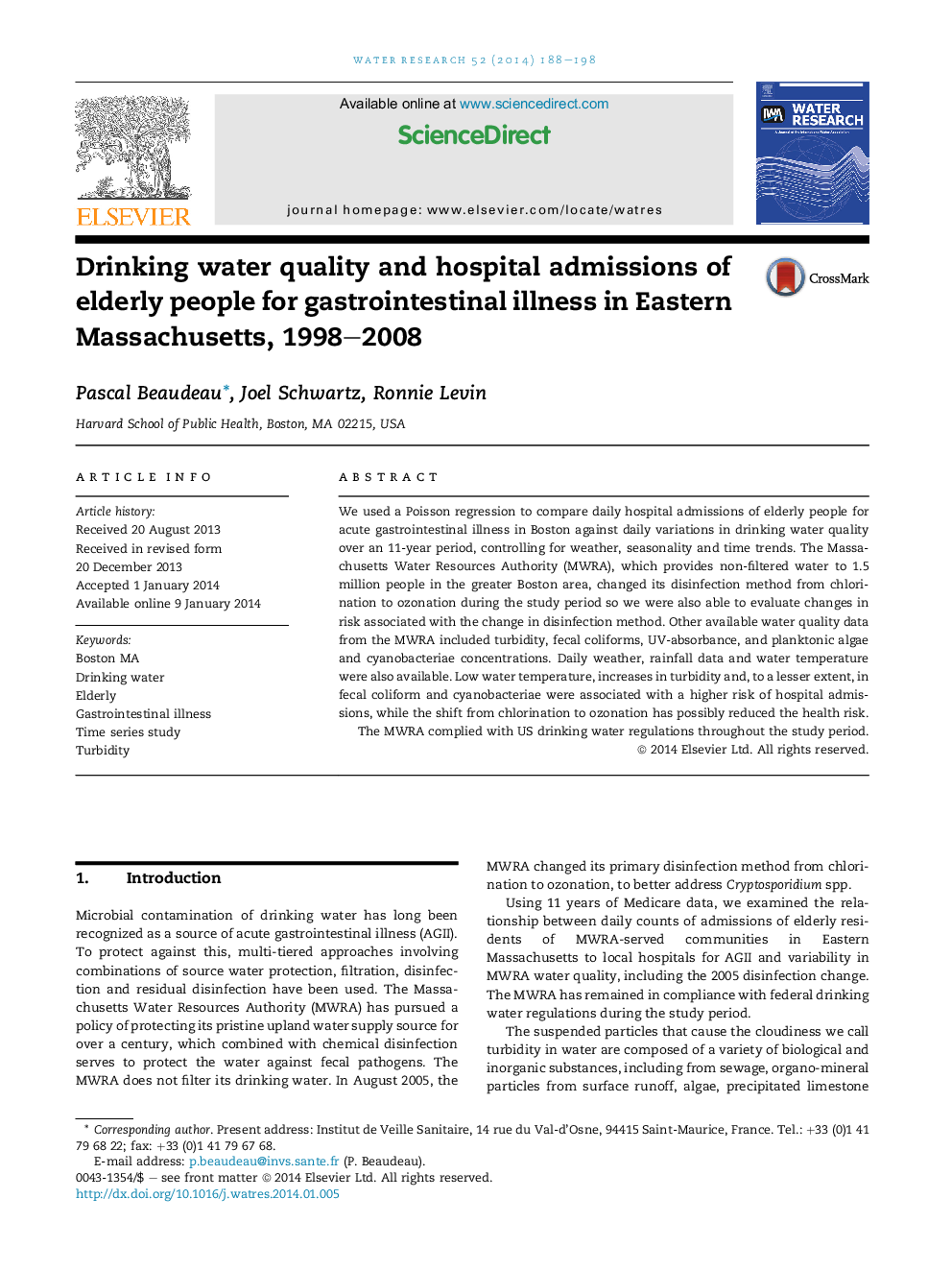| Article ID | Journal | Published Year | Pages | File Type |
|---|---|---|---|---|
| 4481674 | Water Research | 2014 | 11 Pages |
•AGII incidence positively relates to turbidity in Boston's unfiltered tap water.•The associated risk function is more sloping and significant under 0.33 NTU.•Low water temperature could enhance the turbidity related health risk.•The change from chlorination to ozonation has possibly decreased the average risk.
We used a Poisson regression to compare daily hospital admissions of elderly people for acute gastrointestinal illness in Boston against daily variations in drinking water quality over an 11-year period, controlling for weather, seasonality and time trends. The Massachusetts Water Resources Authority (MWRA), which provides non-filtered water to 1.5 million people in the greater Boston area, changed its disinfection method from chlorination to ozonation during the study period so we were also able to evaluate changes in risk associated with the change in disinfection method. Other available water quality data from the MWRA included turbidity, fecal coliforms, UV-absorbance, and planktonic algae and cyanobacteriae concentrations. Daily weather, rainfall data and water temperature were also available. Low water temperature, increases in turbidity and, to a lesser extent, in fecal coliform and cyanobacteriae were associated with a higher risk of hospital admissions, while the shift from chlorination to ozonation has possibly reduced the health risk.The MWRA complied with US drinking water regulations throughout the study period.
